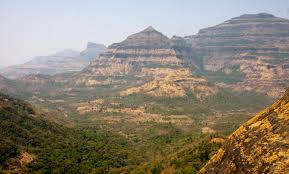
Carlotta Joaquina Maury (January 6, 1874 – January 3, 1938)
In the 18th and 19th centuries women’s access to science was limited. Early female scientists were often born into influential families, like Grace Milne, the eldest child of Louis Falconer and sister of the eminent botanist and palaeontologist, Hugh Falconer. Unfortunately, their contribution has not been widely recognised by the public or academic researchers. Women collected fossils and mineral specimens, and were allowed to attend scientific lectures, but they were barred from membership in scientific societies. By the 1880, in the United States, geology was a marginal subject in the curricula of the early women’s colleges until an intense programme was started at Bryn Mawr College, a decade later.
Carlotta Joaquina Maury was born on January 6, 1874 in Hastings-on-Hudson, New York. She was the youngest sister of astronomer Antonia Maury, who worked at the Harvard College Observatory as one of the so-called Harvard Computers. She was also the granddaughter of John William Draper and a niece of Henry Draper, both pioneering astronomers. Maury maternal grandmother was Antonia Coetana de Paiva Pereira, member of Portuguese nobility serving at the court of Emperor Dom Pedro I of Brazil, a connection which had and important influence on her career.

Harvard Computers at work, including Henrietta Swan Leavitt (1868–1921), Annie Jump Cannon (1863–1941), Williamina Fleming (1857–1911), and Antonia Maury (1866–1952).
She was educated at Radcliffe College from 1891 to 1894. Influenced by Elizabeth Agassiz, co-founder and first president of Radcliffe College, Maury attended Cornell University, where she obtained a PhD in 1902, making her one of the first women to receive her PhD in paleontology. Her mentor was Gilbert Harris, who founded the scientific journal Bulletins of American Paleontology.
Before completing her PhD, she spent a year at the Sorbonne. After teaching in several universities, she investigated microfossils in drilling samples along the Texas and Louisiana coasts and was given an official title as a paleontologist for the Louisiana Geological Survey. In 1910, Maury was recruited to be the paleontologist for oil geologist A.C. Veatch’s year-long geological expedition to Venezuela, a study funded by the General Asphalt Company of Philadelphia. Her discovery in Trinidad of Old Eocene beds with fossils faunas related to those of Alabama and the Pernambuco region of Brazil was the first finding of Old Eocene in the entire Caribbean and northern South America region.

Carlotta Maury at the Palaeontology Laboratory in Cornell. (From Arnold, 2009)
After a short break for teaching at Huguenot College in Wellington, South Africa, Maury returned to the Caribbean in 1916 as the leader of the “Maury Expedition” to the Dominican Republic, during a period of violent political upheaval on the island. The results – type sections and descriptions of fossils, including more than 400 new species – are the foundation for the international Dominican Republic Project, a multi-disciplinary research effort that aims s to understand evolutionary change in the Caribbean from the Miocene era to the present day.
Her reputation for being extremely efficient and energetic helped her to defy the prejudice against professional women at the time. She was a consulting palaeontologist and stratigrapher to Royal Dutch Shell’s Venezuela Division for more than 20 year, and one of the official palaeontologists with the Geological and Mineralogical Service of Brazil. In 1925, she published “Fosseis Terciarios do Brazil with Descripção de Nova Cretaceas Forms” where she described numerous species of mollusks from the northeastern coast, performing the stratigraphic correlation of these faunas with similar faunas of the Caribbean and Gulf of Mexico.

C. Maury in 1916, Dominican Republic.
Maury was fellow of the Geological Society of America, and of the American Geographical Society. During the last decade of her life, she dedicated to publishing her consulting reports. Her last report about the Pliocene fossils of Acre, Brazil, appeared in 1937, shortly before her death. The same year she was elected member of the Brazilian Academy of Sciences.
Carlotta Maury died January 3, 1938 in Yonkers, New York.
References:
Lois Arnold (2009), The Education and Career of Carlotta J. Maury: Part 1., Earth Sciences History 28.2 (2009): 219-244 https://doi.org/10.17704/eshi.28.2.343vu112512w8170
M. R. S. Creese (2007), Fossil hunters, a cave explorer and a rock analyst: notes on some early women contributors to geology, Geological Society, London, Special Publications, 281, 39-49. https://doi.org/10.1144/SP281.3
Burek, C.V. and B. Higgs, eds. (2007) The Role of Women in the History of Geology (London: Geological Society).

